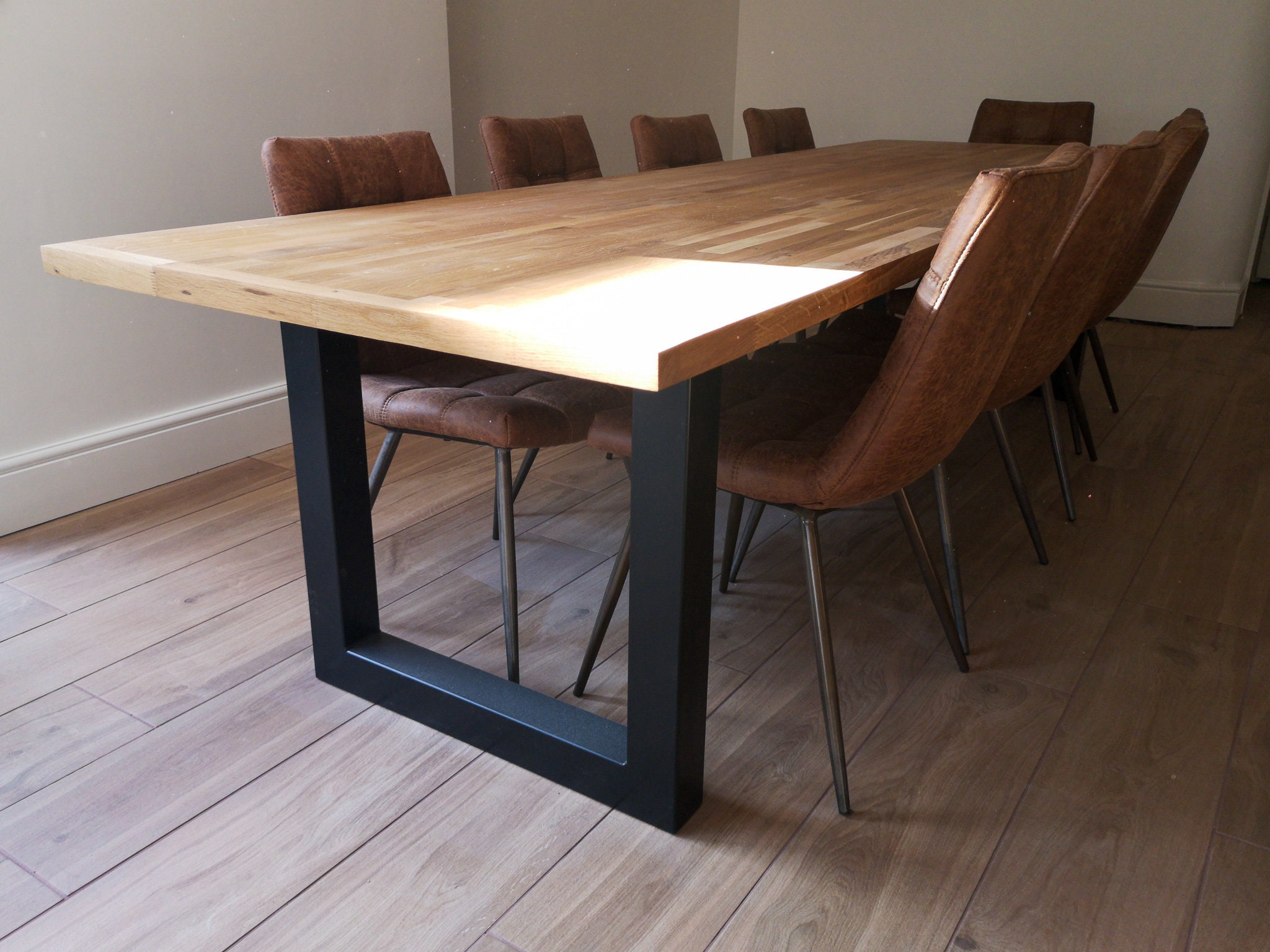Upgrade Your Furniture with Trendy Dining Room Table Legs
Upgrade Your Furniture with Trendy Dining Room Table Legs
Blog Article
A Detailed Appearance at Eating Table Leg Styles: Locating the Ideal Match
Picking the ideal table leg design is crucial for both visual allure and functional functionality. Conventional four legs provide timeless style and security, while the stand base offers increased legroom and a modern look. For those with larger tables, trestle legs make certain sturdy assistance, whereas barrette legs introduce a mid-century contemporary ambiance with their minimal layout. The x-shaped legs blend contemporary design with improved stability. Each of these choices brings special advantages, making the selection more than just a matter of choice. Discover further to discover which design perfectly matches your dining room and way of life.
Traditional Four Legs
Amongst the different sorts of eating table leg designs, the standard four-leg design stays an ageless selection for numerous households. This classic setup provides an unified mix of performance and aesthetic appeals, making it a seasonal favorite. Four legs provide balanced assistance, guaranteeing the table stays steady and efficient in bearing considerable weight. This is specifically advantageous for houses that regularly host large events or use their table for numerous objectives, such as work or crafting.
From a visual viewpoint, the conventional four-leg design can be conveniently adjusted to numerous indoor designs. Whether crafted from timber, metal, or a combination of products, these legs can be elaborately carved, sleek and minimalistic, or anything in between. Their adaptability allows them to match both rustic and modern settings effortlessly.
Moreover, the straightforward structure of the four-leg design facilitates convenience of movement and positioning within an area. Unlike more facility bases, this style minimizes blockages, supplying enough legroom for diners. In recap, the standard four-leg table leg design weds withstanding style with functional performance, making it a sharp option for those seeking both kind and function in their dining furniture.
Pedestal Base
Typically commemorated for its classy and space-efficient design, the pedestal base is a recognized choice to the conventional four-leg setup in eating table leg designs. Without edge legs, restaurants are afforded greater flexibility of motion, making it an excellent choice for round and oblong tables that advertise more intimate and inclusive celebrations.
The main column itself uses a canvas for complex designs and creative expressions, adding an element of aesthetic rate of interest beneath the table. In recap, the stand base incorporates functionality with design, making it a fine-tuned and useful alternative for diverse eating environments.
Trestle Legs
Trestle legs provide a durable and timeless structure for dining tables, identified by their straight cross-bracing and strong support beams. Stemming from middle ages times, this style has actually progressed yet retained its important structure, making it a seasonal favorite in both traditional and modern settings. The central trestle beam, commonly supported by 2 or even more vertical blog posts, offers exceptional security, enabling bigger table lengths without the demand for additional legs.
A substantial advantage of trestle leg tables is the enough legroom they offer. Unlike tables with 4 corner legs, the lack of obstructions at the table's edges gives unimpeded area for chairs and restaurants, improving convenience and ease of access. This makes trestle tables ideal for fitting bigger celebrations, whether in a dining-room or a reception hall.
From rustic farmhouse to smooth modern designs, trestle legs can be personalized to match specific preferences. Their long-lasting appeal and functional advantages you could try this out make trestle legs an engaging option for those looking for both design and practicality in their dining table.
Hairpin Legs

The allure of hairpin legs depends on their simpleness and adaptability - dining room table legs. Readily available in a variety of products, consisting of steel and brass, they can be finished useful source in various shades to match various indoor styles. Whether combined with a rustic wooden table top or a modern glass surface area, barrette legs easily blend performance with a touch of classic beauty
Toughness is another noteworthy function of barrette legs. Regardless of their delicate appearance, these legs are crafted to birth substantial weight, making certain the table remains secure and safe. Furthermore, they are fairly very easy to set up, making them a prominent selection for do it yourself enthusiasts and expert furnishings makers alike.
X-Shaped Legs

Created from materials such as steel, timber, or a mix of both, X-shaped legs can be tailored to match numerous design choices. Steel legs frequently offer a sleek and industrial feeling, suitable for loft-style apartments and contemporary eating spaces. On the other hand, wood X-shaped legs offer a warmer, much more rustic allure, appropriate for farmhouse or diverse interiors. The flexibility in products permits property owners to personalize their table to better fit their total design scheme.
Additionally, the design behind X-shaped legs ensures even weight distribution, reducing the danger of wobbling and improving longevity. This makes them particularly well-suited for larger dining tables that require additional support. In essence, X-shaped legs blend useful engineering with modern looks, making them a classic selection for varied dining atmospheres.
Verdict
An extensive understanding of eating table leg designs reveals the distinct features and benefits of each design. Trestle legs make certain durable support for bigger tables, and barrette legs introduce a mid-century modern-day aesthetic.
Report this page